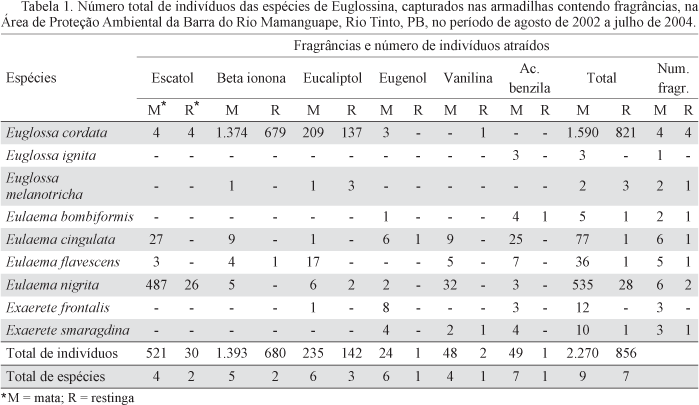Euglossina bees form a group with about 200 species known, widespread in Neotropical Region. Males collect aromatic compounds on flowers and by using synthesized analogs it is possible to accomplish faunistic inventories and study several ecological aspects of these bees. In this work we studied the activity hours and the preference of aromatic compounds by Euglossina males in forest and dunes at Environmental Protection Area of the Mamanguape River Bar, Rio Tinto, Paraíba State, between August 2002 and July 2004. Six artificial compounds were used as attractive: benzyl acetate, ionone beta, skatole, eucalyptol, eugenol and vanillin. Nine species were sampled, being two of them exclusive of the forest. Euglossa cordata (L.) and Eulaema nigrita Lepeletier were the most abundant species as in the forest as on dunes. Males were more active between 8:00 a.m. and 10:00 a.m. in both areas, with no variation throughout the year. Eucalyptol and eugenol attracted most number of species. E. cordata demonstrated preference by ionone beta and eucalyptol and E. nigrita by skatole and eucalyptol.
Daily activity; fragrance collection; Euglossa cordata; Eulaema nigrita


